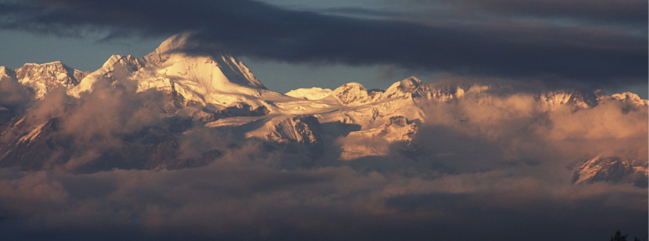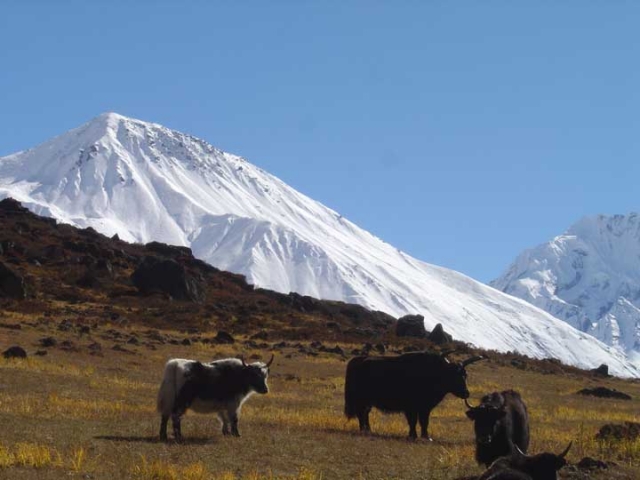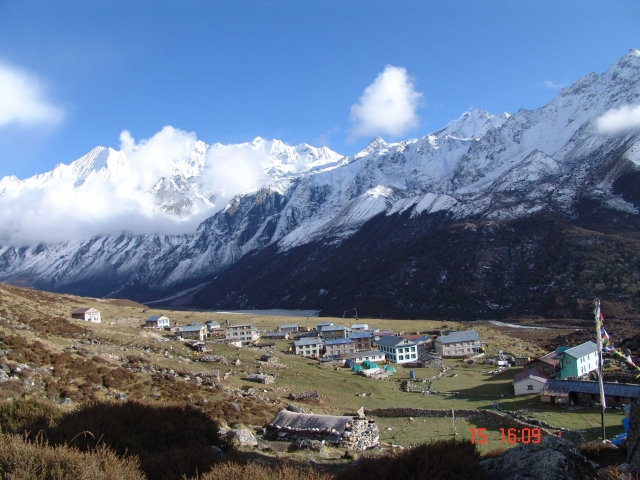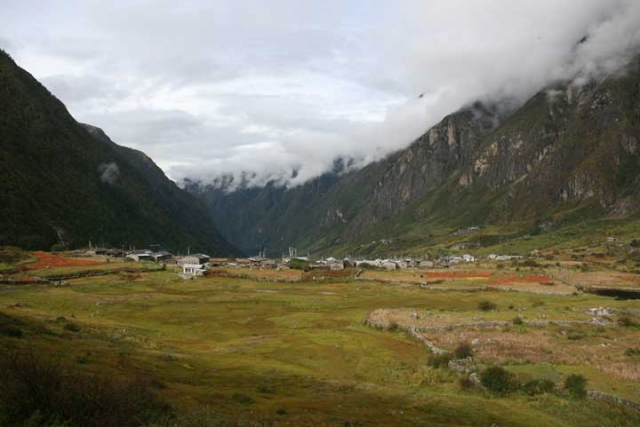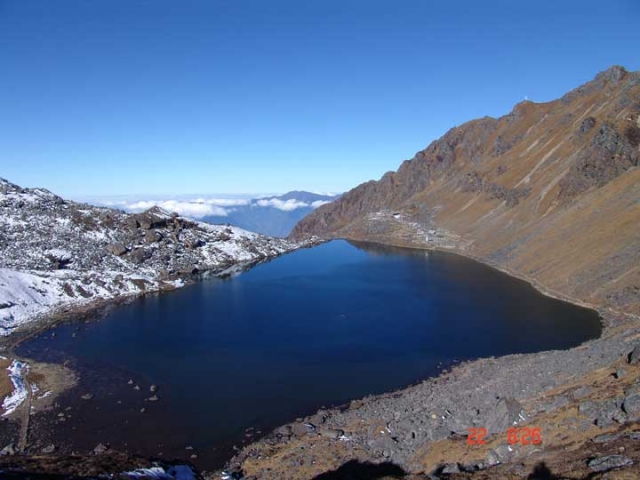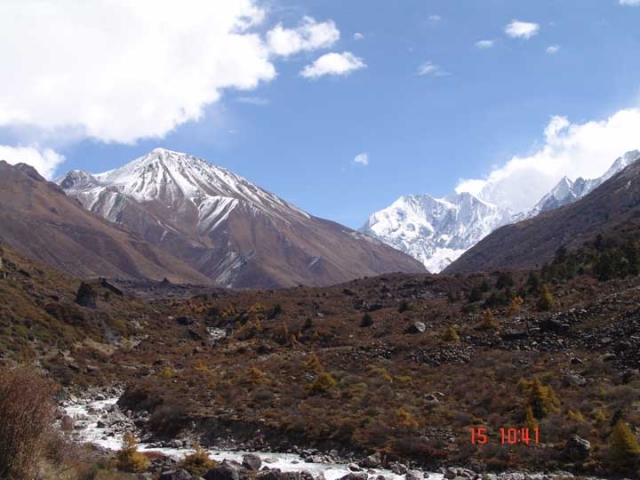Jugal Himal trek is non tourist trekking trail in langtang region .Jugal Himal is the nearest mountain to the northeast from Kathmandu. Jugla Himal trekking is a marvellous trekking through remote traditional Tamang villages and luxuriant forests. The drive from Kathmandu to Melamchi Pul takes about five hours. Then we ascend a series terraced and forested ridges. Jugal himal trek towards the holy lakes named, “Panch Pokhari” (five lakes), situated at 14,000 ft., is it’s another breathtaking attraction. Enjoy the tranquility of trails that offer superb Mountain View, green Himalayan ranges, and running rivers with water falls. Only a few camping trekkers visit the jungal himal area because lodge or other shelter facilities are not available. Jugal Himal trek is special for trekkers who would prefer not to meet many other tourists or spend time in crowded villages. Himalaya journey Treks and Expeditions professional trekking operator arrange the Jugal himal trekking according to trekker’s holiday schedule and wish.This is a unique treks lies north east from Kathmandu called either Jugal himal or Panch Pokhari (five Lakes). This is a famous holly place for the Hindus peoples and possibly seen unspoiled nature and culture as well. Naturally we will see long range of mountain views including east to west mountain range at the beginning and at the end close view of Jugal Himal and Gauri Shanker as well as nice landscape, wilderness forest of Rhododendron including many other flowers and incenses alpine forest. Culturally get experienced of mainly three ethnic groups, Tamang, Sherpa and Hyolmo people and their tradition. We can get a real taste of Helambu’s apple, Bhotang’s potatoes, fresh yak cheese and butter during treks.
Day 01: Arrival in Kathmandu valley (1300m.)
Arrive Kathmandu. Meet assist at the airport and transfer to the hotel. O/N in Hotel.
Day 02: Kathmandu valley sightseeing tour by Tour Guide.
Half day Kathmandu valley sightseeing tour of three places: Kathmandu: Swayambu Nath Stupa,famous hindu Temple of Pashupatinath and buddhist pilgrims of Bouddhanath Stupa , Overnight at hotel.
Day 03: Kathmandu – Sundarijal – Chisapani (2591m.)
Drive from Kathmandu to Sundarijal about one and a half hours. Ascend for about 4 hours to get atop of a hill and descend for 1 hour to Chisapani where there is a very good view point.
Day 04: Chisapani to Gul Bhanjyang (2141m.)
Follow the ridge for about 3 hours to Chisapani. After lunch, descend to Pati Bhanjyang for overnight camping.
Day 05: Gul Bhangyang to Kutumsang (2471m.)
Trek about 4 to 5 hours ascending steeply to Namche Danda. Descend gradually to Kutumsang for overnight camp
Day 06: Kutumsang to Tharepati (3600m.)
Today the trail ascends to Myangyan Goth for lunch break then gradually ascends for about 3 hours passing through the rhododendron forest.
Day 07: Tharepati to Tarkeghyang (2550m.)
Descend through the forest quite steeply in the cool shade of rhododendron forest. We can visit the village to get an idea of the culture and way of life of the people. You may be invited to some homes for ‘Chhyang’ or local beer or perhaps a cup of butter tea. Most houses are beautifully d ecorated with carved cupboards containing old pots mostly made of brass.
Day 08: Tarkegyang to Sermathang (2693m.)
The trail makes a sweep around the wide valley ending between Parachin and the pretty village. The trail drops down from the ridge but then continues at around the same altitude along the side of the ridge crossing a Numbur of streams and waterfalls and picking its way over the debris of a huge landslide.
Day 09: Sermathang to Yangri River (2103m.)
The trail follows the ridge about 3 hours down to the lunch place. After having Lunch, trek along the bank of the river for overnight camp at Yangri.
Day 10: Yangri / Dukeng (2103m.)
Today trek all the way straight about 5 hours passing through the scattered bushes and trees to reach the camping place at Dukeng. Lunch will be served en-route.
Day 11. Dukeng / Nasim Pati (3612m.)
The trail ascends steeply and steadily across stony, grassy pastures to cross the ridge. In spring this can be in deep snow with difficult icy sections in the gullies. The trail finally climbs steeply to a hillock at 3963m. Then it traverses open ground along a flagstone trail to another crest. The views are wonderful in clear weather. There is a stone house above Nasim pati and well-trodden trails that lead off the ridge crest to both east and west.
Day 12: Nasim Pati / Panch Pokhari (4054m.):
It’s about a four hour climb on a well defined trail to Panch Pokhari, five holy lakes at 13300 ft. There are two metal-roofed huts, a sheet metal enclosed shrine to Shiva and a pile of cast-iron tridents. During the June/July full moon, thousands of Nepalese come here to worship. You should not wash in the holy stream near the temples. There is often snow on this ridge.
Day 14: Panch Pokhari / Gai Kharka (2530m.)
Return to Nasim Pati and descend west on a good trail past several ravines with water. We overnight here. Lunch will be served en route.
Day 15: Gai Kharka to Yarsa (2195m.)
The descent continues through forest on a sometimes steep and rough track crossing two major water courses. Pass a few substantial villages then descend a small and very steep trail directly to our camping place.
Day 16: Yarsa to Phusre (2012m.)
Today two hours of easy walking takes you to your lunch place at Barshyap. If weather is fine, you can get magnificent views of Langtang, Gosainthan, Dorje Lakpa, Phubri Chayachu and other peaks. Descend gradually for about 2 hours through a rhododendron forest to reach Phusre.
Day 17: Phusre to Sheoli (1829m.)
A steep descent of about an hour and a half leads through a rhododendron forest. The route continues following a ridge for two hours to reach Phuchusay for lunch. After lunch, trek about four hours through the local villages.
Day 18: Sheoli to Chautara (1418m.)
After breakfast, ascend gradually for 3 hours passing through villages towards to Chautara.
Day 19: Chautara to Kathmandu:
Drive about 5 hours to Kathmandu.
Day 20- Transfer for your final flight departure.
The trip ends, our Airport Representative will drop you to the Kathmandu International Airport for your flight departure from Nepal.
NOTE: The above information is a guide and standard template of what we provide. The trek can be customized at your request to accommodate your specific requirements.
Note : On adventure trips of this type, weather, local politics, transport or a multitude of other factors beyond our control can result in a change of itinerary. It is, however, very unlikely that the itinerary would be substantially altered; if alterations are necessary the leader will decide what is the best alternative, taking into consideration the best interests of the whole group. Where a change does occur, we do everything we can to minimize its effect, but we cannot be responsible for the results of changes or delays.
Q.What type of shape do I need to be in, is this trip for me?
A. Trekking is suitable for average people who are moderately fit, thus no previous experience is required. Some physical fitness programs such as running, swimming, hiking is recommended before you embark on your journey. Persons suffering from a pre-existing medical condition or disease must seek medical advice before considering the trek. Whilst on the trek, it is common to experience some discomfort before being fully acclimatized.
To prepare for a strenuous trek you should begin training at least two to three months before your departure. As a guideline, an hour of aerobic exercise three to four times per week would be considered a minimum requirement. The best preparation is bushwalking involving relatively steep ascents and descents. If you can manage a couple of valley floor to ridgeline ascents per comfortable and able to enjoy the trek to the fullest. They are physically strong, sharp-witted and have an incredibly positive attitude towards a life that we would consider extremely tough. There is something about a trek in the Himalaya that draws you back time and time again. For keen walkers it is a paradise and even avowed non-walkers find that one foot just seems to follow the other, drawn by the appeal of what lies beyond.
Q. Will somebody come to pick me up at the Airport upon my arrival?
A. Yes, our Airport Representative will be there to greet you outside of Terminal Hall, he/she will be displaying an Kiwi Adventures Treks & Expedition sign board. Upon arrival, you will be transferred to your hotel.
Q. What sort of accommodation can I expect in Kathmandu and in trekking?
A. 11 night’s Trekking Guesthouse, 4 nights three/four star hotels in Kathmandu.
We use standard rooms from three/four star hotels in Kathmandu with breakfast included. Along the trekking routes teahouses/Lodges generally provide basic clean facilities with a mattress and a quilt or blanket. We can also offer you sleeping bags if needed (which need to return after the trip) but it is a good idea to always have your own sleeping equipment. We usually provide single and double rooms as well as the occasional dormitory. The dining room is downstairs around a fire. All food will be cooked to order in the little kitchen. You should not enter the kitchen unless asked to do so.
Q. What sort of food can I expect in trekking?
A. In trekking most teahouses (lodges) cook a delicious range of mostly vegetarian fare. Pasta, tuna bakes, noodles, potatoes, eggs, dhal bhat, bread, soups, fresh vegetables (variety depends on the season) and even some desserts like apple pies, pancakes, and some interesting attempts at custard. You will find a lot of garlic on the menu because it assists with acclimatization – eat some every day. In many larger villages you may find some meat on the menu. You can always get hot chocolate, tea, and hot lemon drinks, as well as soft drinks, and treats like chocolate and crisps.
Each day dinner and breakfast are used to take in the same lodge you spend the night. Lunch will be taken on the way to destination.
Q. What sort of transportation you use?
A. Kiwi Adventures Treks & Expedition is all about providing you with local insights as well as adventure, with that in mind, where we think you will get more out of your holiday by using different means of transport that is what we do. Using a variety of private transport is an integral part of our Himalaya tours and enhances the experience!
We use private tourist vehicles for sightseeing, city tours and pickups. Depending on the group size we use cars, minibus, van or land cruiser. These small light vehicles are more manoeuvrable and flexible enabling us to take you through the Narrow roads of Nepal. All the vehicles are usually air-conditioned unless we are travelling in cooler areas.
Q. What is the best season for this trekking?
A. Our trekking season extends from mid- September to May. From early September the monsoonal rains decrease. By end of September through to December the weather is usually stable with mild to warm days, cold nights. February, March, April, May, October, November, December are the best time to do trek.
Q. What is the weather & temperature like in trekking?
A. Weather in the mountains is notoriously difficult to predict. At night it is generally cooler the days are generally warm. Winter (January and February) will be bit colder but the days can be quite beautiful and warm if the sun is out. There will be bit of snow during the month of January, February and December. It is also important to make sure that you can stay warm and dry in just about any conditions. Expect the unexpected! The temperature could be as high as 20 deg C to -15 deg C low.
Q. Can I charge my digital camera or other batteries on my trip?
A. These facilities will be available in most of the places in your hotel reception by paying some service charges. Remember to bring your adapters!
Q. Is there any communication while we are on trekking?
A. There are telephones in some villages along the trekking routes from which you can make international calls.
Q. Can I use credit cards in the places visit in trekking?
A. In most cities yes, to some extent, however once you leave those cities behind, all you need is cash.
Q. How much additional money do I need per day?
A. In Kathmandu, you can allocate US$ 10 – 25 for a lunch / dinner. It’s all depends on your spending habits. US$7 to 10 US$ a day will be enough to buy bottles of water, chocolates and few drinks in trekking.
Q. Do I need to tip my guide and porters? How much would that be?
A. This is a difficult thing to gauge. We have seen everything from 20USD to 1000 USD per person for guides and porters. Tipping is not required, but a small way to show your guides and local porters thanks for their help. The level of the tip should reflect the level of personal involvement with your guide.
Q. Is the water OK to drink? Do I need to bring purifying tablets/filter?
A. In most places bottled water is readily available. If you wish to drink normal water, you need to use purifying aid, which you will need to bring with you.
Q. Are the Kiwi Adventures Treks & Expedition staff insured?
A. Our company insures all our trekking staff, including guide, cook, sherpa and porters.
Q. What essential documents do I need to bring with me on tour?
A. *Valid Passport – must be valid for up to 6 months after you return from your tour, keep a separate photocopy.
*Travel insurance, keep a separate photocopy
*Cash and Traveller’s Cheques, keep numbers and proof of purchase separate
*Flight tickets
*Emergency contact numbers for T/C’s, banks, insurance, family contacts.
Q. Can I add extra days to my trekking trip?
A. A hoilday should never be about making it to the final point quickly. Along your trek we can add days at your request with additional costs to cover guides, porters, accommodation and food.
Q. Do you use yaks/porters on the trek or do we carry all of our own gear?
A. Whilst on the trek, our porter will take care of your luggage. All you need to carry is your small day bag for your personal belongings like camera, water bottle, sun cream etc only.
Q. What opportunities will I have for shower along the trek?
A. In major places, we arrange guesthouse with hot shower. And in rest of the places, hotel water in bucket will be provided for shower; it would cost you extra about USD 3-4 per shower.
Q. Do you know about how many total miles the trek is?
A. Total distance of the entire trek is about 75 miles.
Cost Includes
• Airport / Hotel / Airport pick up & drop by private car / van / bus.
• Heli Charter till Ghoda Tabela
• Standard accommodation in four/five star hotel in Kathmandu breakfast included.
• Guided city tour in Kathmandu by car / van / bus.
• Sightseeing/Monuments entrance fees in Kathmandu.
• All your standard Meals (breakfast, lunch and dinner) during the trek.
• Best available Lodges, Guesthouses accommodation during the trek (mainly in twin sharing).
• A local government licensed English speaking Guide during the trek.
• The required number of staff and Porters to carry your luggage during the trek.
• Food, accommodation, salary, insurance, equipment, medicine and transportation for all trekking/tour staff.
• Langtang National Park permits.
• First aid medical kid.
• Surface transfer from and to Kathmandu.
• All our government taxes.
• Official expanse.
Cost Excludes
• Lunch and dinner whilst in Kathmandu.
• Your travel insurance (compulsory).
• International airfare and airport departure tax.
• Nepal entry visa fee (US$ 30 per person) you obtain a visa easily upon your arrival at Tribhuwan International Airport Kathmandu for 60 days from date of issue. You will require 2 passport size photos.
• Alcoholic, hot and cold drinks, laundry.
• Personal trekking Equipments.
• Tips for trekking staff. (Tipping is expected).
• Any others expenses which are not mentioned on Price Includes section.
